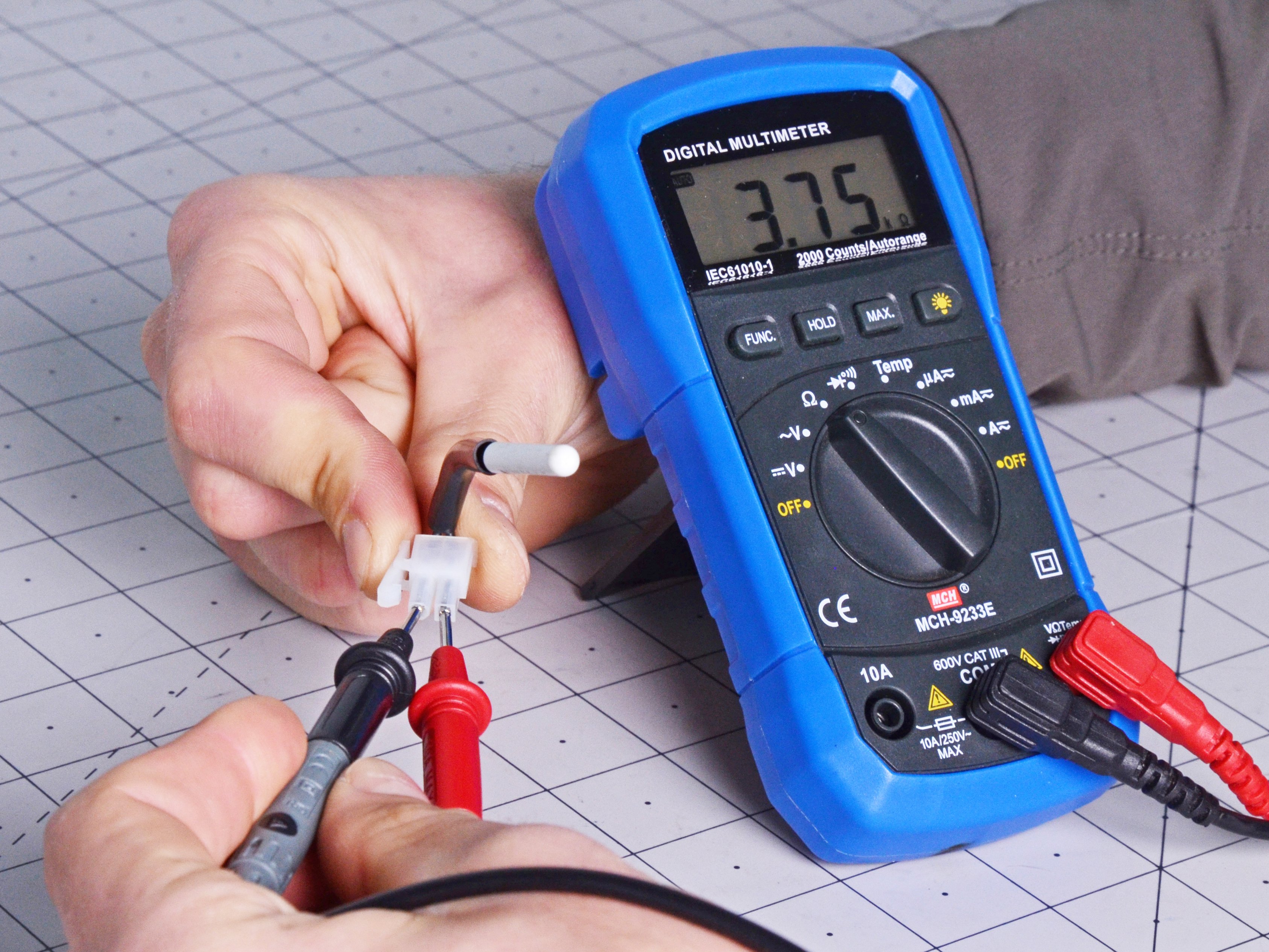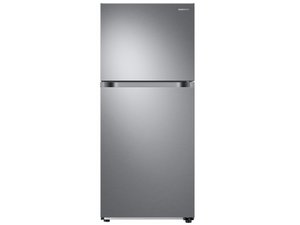Introduction
This page varies from a similar problem freezer not freezing because this is the opposite set of symptoms — the freezer is freezing, and the refrigerator isn't cooling. Proceed with these fixes if you feel you're in the right spot.
First Steps
Regular Maintenance
It's important to perform regular fridge maintenance before trying these fixes. Your appliance should last for at least 10-15 years before needing replacement, so keep it running well with these tips.
Safety Note: Power Down the Fridge
Before removing and replacing or continuity testing electrical components, power down the fridge. This will prevent damage to the components and prevent you from being electrocuted. Still, some electrical components — like capacitors — will store their charge and should not be tampered with.
- If the fridge is pulled away from the wall, or if the power switch is easily accessible, remove the plug.
- Otherwise, find the fridge’s circuit breaker in your breaker box and turn the circuit off.
- Verify your fridge has lost power by opening the doors and seeing if the fridge lights turn on.
Safety Note: Sharp Sheet Metal
When working underneath the fridge, consider wearing gloves to avoid cuts from the sharp sheet metal. The sheet metal is the thin structural metal where components mount. While wearing gloves may make work more challenging, it’s worth protecting yourself.
Causes
Your fridge will not work if its power has gone out. Make sure the interior lights or exterior control lights are lit. Perhaps the fridge is running but lights are flickering or burned out, which indicates power.
- If you seemingly have no power, check the electrical breaker. Reset the breaker in the event of a trip. Find the GFCI outlet and reset it as well.
- Still no power? Run an extension to another outlet and test again.
- If another outlet works, then there's an issue with your house's electrical. Consider calling an electrician.
- Still no power in another outlet? Your fridge has an electrical issue. Call an appliance technician.
Refrigerators perform best when around 70 degrees Fahrenheit (21 degrees Celsius) and stored inside a home. Fluctuations from this temperature affect the cooling capacity and create fluctuations in temperature.
When in an unheated garage where the temperature drops below 36 degrees Fahrenheit (2 degrees Celsius), the refrigerator may shut down and stop cooling. This can lead to food thawing and warming inside the insulated fridge.
Additionally, a fridge located in a warm room, under the sun, or near hot appliances like the dishwasher, range, and oven, can experience difficulties cooling effectively.
- Separate or insulate your fridge from heat sources.
- Use fans and promote airflow to cool rooms.
The evaporator fan blows air cold around the freezer. While the freezer is more efficient when it is appropriately loaded with food, too much food or incorrectly placed food will block the vents and prevent proper temperature regulation. The refrigerator vents allow for airflow between the fridge and freezer compartments. Blocking these vents may result in many issues.
- Locate your evaporator fan and move frozen items further away.
- Unblock the vents. A rule of thumb for frost prevention is to stock enough food to fill the freezer while keeping an inch of space between the food and the walls.
View the knob or dial that sets the device temperature. Verify it is set on cold and hasn't been bumped or shifted positions. Your fridge should be set below 40 degrees Fahrenheit (4 degrees Celsius) and above 35 degrees Fahrenheit (2 degrees Celsius). Use a thermometer if you don't have a digital thermostat display.
Door seals are gaskets for your fridge, and as they age and fall apart, cool air escapes through the cracks in door seals.
- Inspect your door seals, then clean or replace if necessary.
At the backside and bottom of your fridge are the condenser and its coils. Refrigerant passes through the coils which dissipates heat during the cooling cycle. As dust and debris pile onto the coils, the fridge becomes less efficient the fridge must work hard to cool down.

- Pull your fridge out and inspect the coils.
- Your fridge may have an anti-tip bracket and can only be removed by pulling straight out from the wall.
- Clean dust off condenser coils and fan with a stiff brush and vacuum.
- Work carefully during this task and avoid bending or damaging the tubes.
A fridge out of level may refuse to cooperate and cool effectively.
- Start by adjusting the front feet. Use a bubble level and correct any side-to-side wonkiness in the fridge.
- Tilt the fridge back slightly. This will allow doors to close on their own, increase efficiency, and prevent ice maker issues.
The condenser fan draws air over the compressor and through the condenser coils. If the fan motor isn't working normally, then the fridge won't cool properly.

- Check the fan blade for physical obstructions
- Rotate the fan by hand. If it doesn't spin freely, replace the motor.
- If it spins freely, test the motor for continuity. Replace the condenser fan motor if the continuity test fails.
The evaporator fan draws air over the cooling coils and circulates this air within the fridge and freezer compartments. The evaporator fan should be running as long as the compressor motor is running. If your fridge only has one evaporator fan motor it's located in the freezer compartment. When the fan fails it won't circulate the cold air to the refrigerator. In this event, the freezer may still get cold while the refrigerator stays warm.

- Check the fan blade for physical obstructions.
- Note: The fan may not be running if it's iced up due to a
- freezer building ice guide
- Rotate the fan by hand. If it doesn't spin freely, replace the motor.
- If it spins freely, test the motor for continuity. Replace the evaporator fan motor if the continuity test fails.
- An unusually noisy motor should be replaced as well.

- 5 minutesEasy
Another problem that prevents your fridge from getting cold enough is a faulty thermistor. The thermistor is a sensor that monitors the air temperature. It is connected to the control board. If the thermistor is defective, the refrigerator does not cool (or may cool continuously).

- Grab a multimeter and continuity test the thermistor. You can measure the thermistor if it is 46 degrees Fahrenheit (7 degrees Celcius) or colder. Place the thermistor tip into a cup of ice water and cool if you're above the target temperature.
- If the value isn't between 10—15kΩ, replace your temperature sensor.

- 5 minutesEasy
If the refrigerator is not cold enough, the temperature control board might be defective. The temperature control board provides the voltage to the fan motors and compressor. These boards are often misdiagnosed. Check all other components to be certain this is the cause of the problem.
Sometimes if the refrigerator isn't cold enough, the compressor might be having difficulty starting up. The start capacitor serves as a battery to give the compressor a boost of power during startup. If the start capacitor is burned out —and smells burnt — the compressor might not be able to start and run as often as it should.

- Safely remove the capacitor and discharge with a discharge tool.
- On smaller capacitors, you can use a screwdriver to discharge. But be careful as capacitors increase in size.
- Test the start capacitor first with a capacitance meter; they don't fail often. If it's faulty, replace it.

- 2 - 15 minutesModerate
The overload relay is a protection device in the compressor circuit and is often combined with the start relay. You can find it plugged directly into the side of the compressor. If the fans are running and your compressor won’t start, or if you hear a clicking sound from the unit follow the troubleshooting below.
 |  |
- Check the overload relay for signs of overheating or arcing.
- This may be a hot module, burnt, or rattles when shaken.
- Check for continuity with a multimeter.
- Flip the unit over and test again. If there's no continuity, replace the unit.

- 5 minutesEasy
The start relay is a small device mounted to the side of the compressor. It provides power to the run winding, along with the start winding, for a split second at startup to help get the compressor going. If the start relay is defective, the compressor may run intermittently or not at all, and the refrigerator will not get cold enough. The start relay should be replaced if defective.
- Test Start Relay with a multimeter. View the video above and verify if your start relay is functioning.
- Replace the relay if it fails the testing or has a burnt odor. Depending on your start relay, you may have to test the start capacitor and overload relay first and use a process of elimination. If the other two components pass continuity tests, and your compressor isn't starting, try replacing your start relay.
The compressor is the workhorse of your fridge. By pressurizing the refrigerant, the evaporator is able to create cold air. If the compressor is very noisy when you start it up, it may have been damaged in transit, or you could just have a faulty compressor.
If the overload relay, start relay, and start capacitor pass continuity testing, then you may have a defective compressor.
- Test the compressor for continuity. Resistance values vary based on the compressor, so view this video. Values outside of the range or a short to ground will mean replacing the compressor, which is a costly repair. If your fridge is more than a few years old you're better off replacing the fridge instead of just the compressor.












